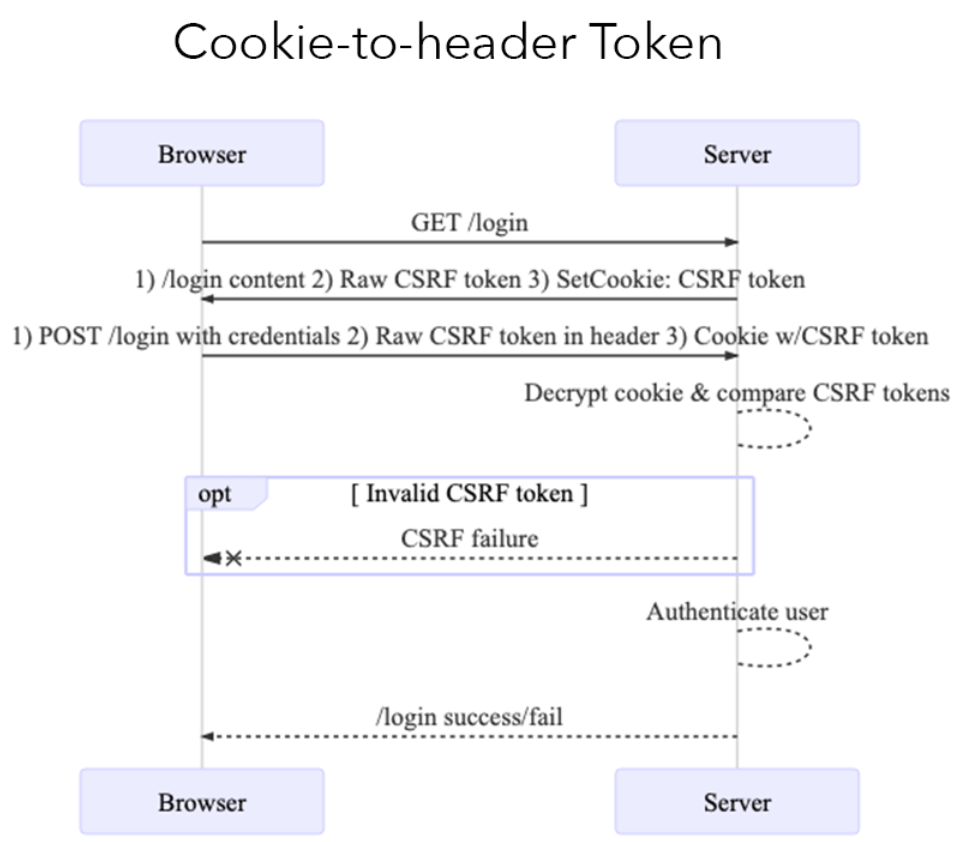2.4 CSRF Protection in Angular
What are the defense mechanisms against CSRF available in Angular ?
Built-in prevention
Angular has a built-in CSRF prevention mechanism called cookie-to-header token. It is a mix of 2 protection patterns : "Double submit cookie" and "Custom header"
cookie-to-header workflow
- During authentication, the server sends a random CSRF token in a cookie
XSRF-TOKEN. - Angular reads the token from the cookie
XSRF-TOKEN. - Angular puts token in request header
X-XSRF-TOKEN. - For each request, the browser sends the cookie and the request header.
- Server extract and compares both tokens received from the client.
- Server decides to verify the action only if the tokens match.

WARNING
CSRF prevention needs to be implemented in both your server (back-end) side, and your client (front-end) side.
As Angular provides solution as a client, you must investigate your back-end framework in order to generate and handle the random CSRF token.
Configuring CSRF protection in Angular
Angular HttpClientModule has a built-in CSRF protection enabled by default.
For a server that supports a cookie-based CSRF protection system, use HttpClientXsrfModule (in the import section of the module where your components are declared) to configure the XSRF protection (cookie name, header name, ...) or to disable it.
imports:[
HttpClientModule,
HttpClientXsrfModule.disable()
]
By default, your application will automatically send the cookie cookieName: 'XSRF-TOKEN', and the header headerName: 'X-XSRF-TOKEN' for each request sent from this component. If you want to customize the setting (to match server's cookie name for instance) :
imports: [
HttpClientModule,
HttpClientXsrfModule.withOptions({
cookieName: 'your-custom-Xsrf-Cookie',
headerName: 'your-custom-Xsrf-Header'
})
]
The CSRF module implements the default interceptor HttpXsrfInterceptor.
Further resources
owasp.org/www-community/attacks/csrfangular.io/guide/http#security-xsrf-protection